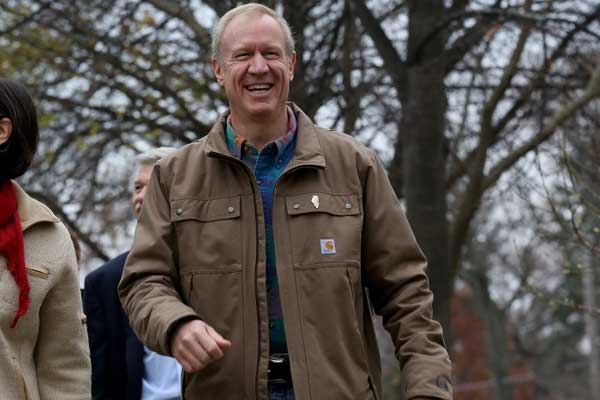Earlier today, I discussed where Bruce Rauner had found the votes across the state to beat Pat Quinn (and improve on Bill Brady's gubernatorial run in 2010). But how about the city itself?
Compared to 2010, Pat Quinn got an astonishing 40,000 fewer votes in Chicago—in the city alone—in his 2014 loss, falling from 520,413 to 480,116. With a 170,000 vote margin statewide, that's a lot. (Based on 99% reporting; a handful of precincts in Chicago are still out.)
Bruce Rauner got good news, if less extreme. He exceeded Bill Brady's vote total in the city by 9,000. It's not a shocking number, but it's the equivalent of a decent-sized downstate county, and either way, it helped Rauner slightly exceed his goal of 20 percent of the vote in the legendary Democratic stronghold.
Some of that can obviously be attributed to turnout, which was low. But the patterns in the city are still quite interesting. And Bruce Rauner can take home an actual victory.
Pat Quinn vs. Bruce Rauner
Yep, Bruce Rauner won the 42nd Ward, which covers Streeterville, River North, the Loop, and parts of the Near West Side. Not by much, but he did it.
And he just barely lost the 43rd Ward (which includes Lincoln Park), by a mere 0.7 percent. It drops off quickly from there; -3.2 percent in the far-north-side 41st Ward (Norwood Park, Edison Park), -12 percent in the near-south-and-west 2nd Ward (Near South Side), -17 percent in the far-north-side 38th Ward (Portage Park). After that, Quinn's margin of victory gets substantial, winning up to 94 percent in the far south-side 34rd Ward (West Pullman, Roseland).
But Rauner has to count it as a victory; Bill Brady did no better than 44.7 percent in any ward, losing the 41st (under different boundaries) to Quinn by almost three percentage points. Rauner broke through, putting his stamp in the middle of the city.



